Michel Reilhac and Myriam Achard discuss COVID-19’s impact on the XR community, the dangers of mixing VR with social media, and why LARPing might just be the most immersive experience in the world
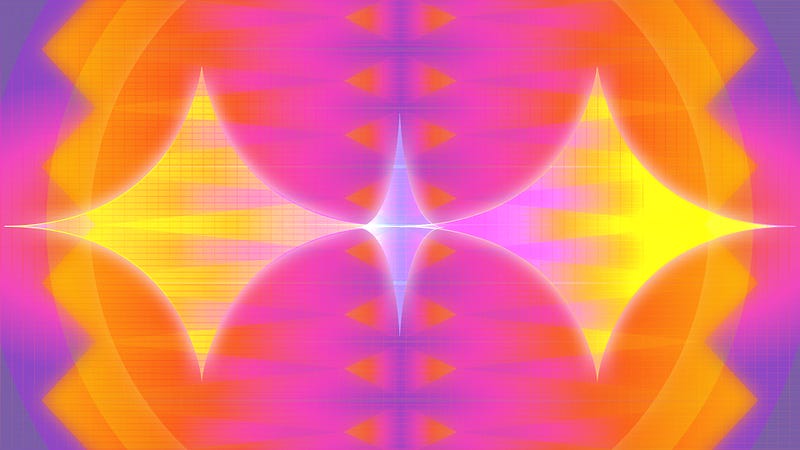
PHI — a Montréal-based organization consisting of three separate but complementary entities, the PHI Centre, the PHI Foundation for Contemporary Art and the PHI Studio — is guest editing the 37th issue of Immerse. We continue the series, Emergence, with this fourth article, a conversation between Michel Reilhac, curator for Venice VR and Myriam Achard, Chief, New Media Partnerships and Public Relations at PHI. Through these articles, we will explore how our approach has been shaped by new modes of art consumption, both online and offline, how we responded, what we’ve learned, and what has fundamentally changed during the global pandemic.
As the use of VR grows, should the public have any reason to be concerned? Venice VR curator Michel Reilhac thinks so. PHI invited him to sit down with Myriam Achard, Chief of New Media Partnerships and Public Relations at PHI, to discuss what the tight-knit XR community has gone through these past eight months. Despite a recent negative experience that changed his view of VR, Reilhac still remains quite positive about the future of immersive storytelling — as long as it’s kept separate from social networking. We also took a deeper look at Venice VR’s decision to rebrand as Venice VR Expanded and at how COVID-19 has forced the entire XR community to pivot their artistic initiatives for the better. The year 2020 may have taken the world of immersive storytelling by surprise, but Reilhac insists that the creativity in the field continues to grow at a dizzying pace.
Based out of Amsterdam, Reilhac is a freelance explorer who specializes in new forms of immersive and interactive storytelling. His work outside of co-curating Venice VR includes filmmaking, running the Venice Biennale College Cinema, and building bridges between the worlds of film and VR. As Chief of New Media Partnerships and Public Relations at PHI, Achard is the voice and face of PHI internationally.
This conversation was transcribed and then edited by Julia Borsellino for clarity and length.
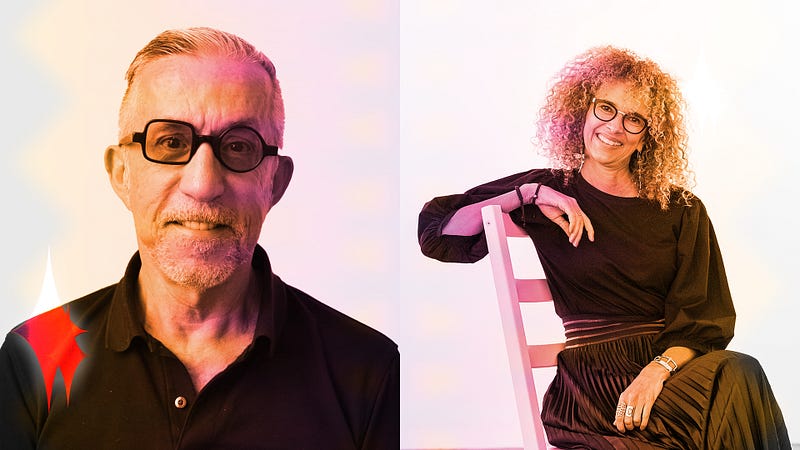 Michel
Reilhac, VR filmmaker and VR curator for the Venice Biennale International Film Festival, and Myriam
Achard, Chief, New Media Partnerships and Public Relations at PHI. (PHI)
Michel
Reilhac, VR filmmaker and VR curator for the Venice Biennale International Film Festival, and Myriam
Achard, Chief, New Media Partnerships and Public Relations at PHI. (PHI)ACHARD: You’re a very busy man, Michel, and we’re very grateful that you accepted to speak with us. Our conversation will be separated into three parts: the new reality, the prototypes, and the new possibilities. This pandemic has put the immersive storytelling community in a very strange state of mind, but how can we learn from it? Let’s begin by making an overall assessment of the new reality. XR experts are a tightly woven international community. Producers, artists, and institutions routinely come together at major festivals and events. Unfortunately, COVID-19 has stopped this from happening and the network is suffering as a result. What’s your take on what happened to us?
REILHAC: Something happened to me during Venice VR Expanded that I’d like to share with you. I should first mention that we rebranded Venice VR as Venice VR Expanded this year. And while the Venice Film Festival still took place physically, the whole VR section of it was only available online for those who were in Venice. I ended up spending 9 hours a day with a headset on, locked in an office, where I was virtually interacting with those in attendance. But after nine hours every day, I was a complete zombie when I took my headset off at night. The real world felt incredibly dark, empty, and boring in comparison to the virtual world. After three days of this, I realized that what was happening was a complete addiction to the flashy VRChat world. This experience led me to completely reassess the near future using VR technologies. I had to really think hard about what VR is going to become and what my responsibility as a maker is in terms of shaping this new art form. I’m very concerned when I think of what Facebook is about to do with Horizon. VR is so powerful that the danger of addiction and disconnection from the real world is huge. The experience I had showed me that the XR community needs to be very careful with what we advocate. The challenges of VR in terms of identity and perception of reality, they’re not something that’ll only be experienced in the distant future. I experienced it so strongly that it’s completely changed my perspective on the matter.
This experience led me to completely reassess the near future using VR technologies. I had to really think hard about what VR is going to become and what my responsibility as a maker is in terms of shaping this new art form.
ACHARD: I completely agree with what you’re saying. I feel like that was one of the big worries when VR technology first came out, that it would disconnect us from each other even more.. However, I do believe that there is a sort of duality and that the best VR actually brings people together. As creators, producers and exhibitors of XR and VR, it’s definitely our responsibility to showcase experiences that are created with a mission to make the viewer more human in mind. There’s something very beautiful about experiencing VR that can make you empathize with people you’ve never met or with parts of the world you’ve never seen before. And while there are VR films out there that allow us to live in larger-than-life fantasy worlds, it’s amazing that we can connect with worlds that we’d never see otherwise. I agree, though, that there’s a very fine line in VR and that, as experts in the field, we must be very careful with what we promote. That is our responsibility.
REILHAC: The XR community is playing with something that’s going to become more and more powerful as it becomes more prevalent in domestic life. What it’s going to do to us individually and collectively is going to radically upset the paradigm of identity and how people relate to the world. So, I am now incredibly cautious about what we promote with VR, what we advertise, and what we play with. This connection within the community is incredibly crucial in terms of pushing the art form, because it truly is an amazing art form. But, at the same time, we need to be super careful about the social interaction dimension of it.
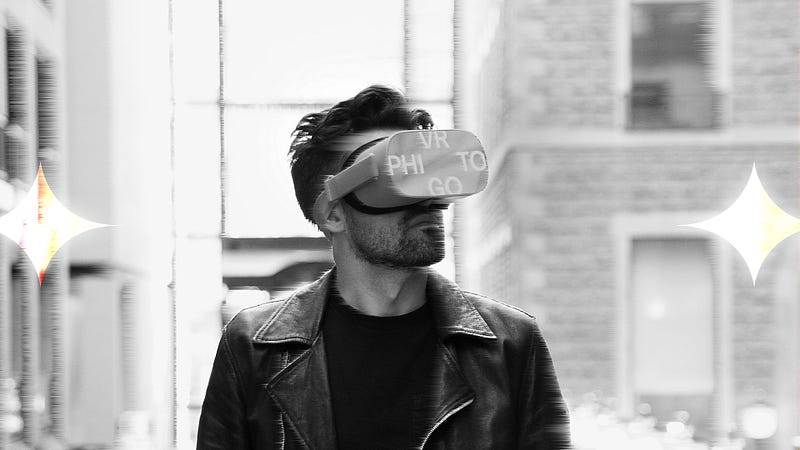 Since May
2020, PHI VR TO GO makes its way into people’s homes to take them on a journey around the globe
through virtual reality. PHI VR TO GO has generated an overwhelming response in Montreal, which
conducted its implementation in Quebec city. (PHI)
Since May
2020, PHI VR TO GO makes its way into people’s homes to take them on a journey around the globe
through virtual reality. PHI VR TO GO has generated an overwhelming response in Montreal, which
conducted its implementation in Quebec city. (PHI)ACHARD: Yes. People spend hours mindlessly scrolling through social media, obsessing over it. I can just imagine that this will get worse once the VR technology aspect is added in. Like you’ve experienced firsthand, it can cause a lot of unnecessary social anxiety and addiction issues within our society. Watching VR could become as mindless as scrolling through Instagram if the social media aspect isn’t regulated. It could become almost overwhelming. That’s why I believe that the curation of VR pieces is super important, especially now that VR is becoming more and more accessible at home. There’s a lot of work and care that goes into selecting VR pieces that provide cultural and social value to the viewer. When North America went into lockdown, it really took us by surprise. We had no idea that COVID-19 would shut everything down so quickly. All of a sudden, PHI had to find a way to stay in touch with our public. Since people were not able to come to us anymore, how could we go into their homes? That was the idea behind the PHI VR TO GO initiative. But do you think that the XR community should maybe be more cautious about VR going domestic? I’m curious to hear your thoughts on that.
REILHAC: Yeah. I think there’s a big difference in offering — as producers, exhibitors and makers — high-quality experiences that take you into a fiction world, just like books or films do. That is something that we can explore and develop. But I am now making a very clear distinction between doing that versus promoting VR as a social network. The consequence of the experience I shared with you is that I have dropped out entirely of Facebook, Instagram, and all of that bullshit. It’s just so toxic for us as individuals and as societies. When Facebook launches Horizon, it’s going to be another massive way of controlling our behaviours. It’s like a modern Disneyland. It’s a way of hygienizing profiles, behaviours, and interactions. It takes away any kind of originality and I’m really worried about this. Social networks have been proven to be incredibly destructive in terms of building original identities, particularly for young people. So, I’m now a very strong activist against VR being a part of social networking. We need to be very careful.
ACHARD: I agree, Michel, we do need to be very careful. Let’s get into the second part of the discussion, which is about the prototypes. This is about getting concrete in this new normal — like you did with Venice VR Expanded, for example. To add in a bit of context for those who are reading this, you had fifteen satellite spaces around the world agree to physically showcase almost the entire VR selection of Venice VR Expanded. The PHI Centre was the only satellite space in Canada and it was really a big success overall. Can you tell us more about how the idea came to be and how this situation affected the selection?
REILHAC: The selection was affected by the fact that we could not select any physical installations. You understand this well, because the PHI Centre has become a major partner in producing the set design and all of the user experience of installations from a physical design standpoint. We couldn’t do that because we didn’t have a physical place. Aside from that, we decided that we would not restrict our choices on the basis of platforms or formats. We knew that we were making our life a lot more complicated but we wanted to respect the integrity of each piece by showing them in their original format on the original platforms that they had been designed for. We ended up having to jump from VRChat to HTC Viveport to Oculus to a few ad hoc platforms. The biggest challenge for us was the multiplicity of platforms. You started PHI VR TO GO because people could not come to the PHI Centre and that same sort of idea led me to suggest the idea of the satellites. Since people were not going to be able to come to Venice physically, I wanted to find a way to have Venice come to them. And indeed, it was a big success. Almost all the pieces we showed were world premieres. It featured some of the very best work that is being done in the world today.
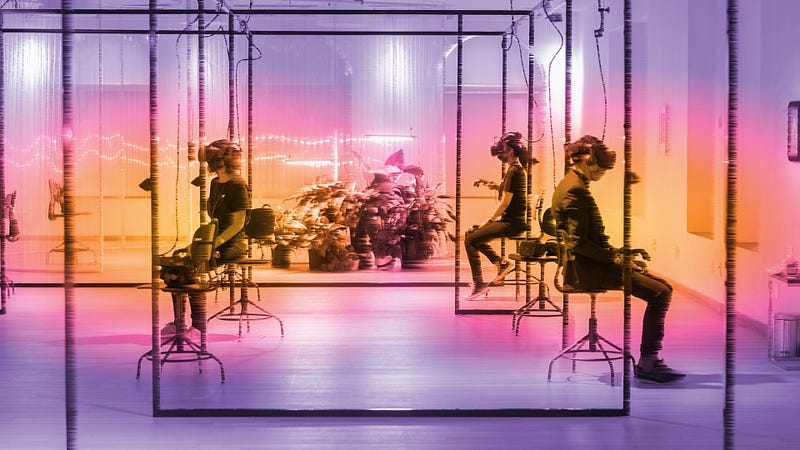 This year,
from September 2nd to 12th, PHI Centre was amongst the international satellite locations
collaborating with the Venice Mostra’s virtual reality section (Venice International Film Festival)
to present a selection of virtual reality works to the Montreal public. (PHI)
This year,
from September 2nd to 12th, PHI Centre was amongst the international satellite locations
collaborating with the Venice Mostra’s virtual reality section (Venice International Film Festival)
to present a selection of virtual reality works to the Montreal public. (PHI)ACHARD: How you were able to bring that network of satellite spaces together for this was really groundbreaking. Some spaces, like the PHI Centre or Paris’ Diversion at the CENTQUATRE, were already equipped with the in-house expertise needed to exhibit VR. However, PHI was still challenged by this project. First off, the user experience was quite difficult to manage. Our amazing exhibition mediators can usually take the time to explain the VR works and headsets properly to our visitors, but that simply wasn’t possible due to the COVID procedures in place. It was also technically challenging to present almost 40 different works on various platforms. On top of that, we had decided to create a new VR equipment-cleaning protocol to ensure that we were being extra safe. Some of the satellite spaces didn’t have our expertise; they were just so enthusiastic to take part in the experience. Did they know what they were getting into before they said yes?
REILHAC: They didn’t.
ACHARD: What did they learn during this process and how did they learn so quickly? I know that many of them enjoyed the experience and still want to be part of the XR network, but it was really tough for some of them.
Reilhac: Yes, it was tough because the technology involved is still complex. Thankfully, it’s getting easier. But you always underestimate the issues and bugs that arise due to compatibility between softwares or hardwares in VR. Unfortunately, some venues had to drop out because they couldn’t solve certain problems. We did try to help them and the Parisian team from Diversion stepped in to serve as a sort of technical liaison between all the satellites. The beauty of the network is that all fifteen venues that participated are now connected and want to continue to do things together. They want to facilitate the circulation of works, shows, and exhibitions. I find that to be a wonderful and encouraging sign. I think that in order for the whole community to move onto the next step, we need to build a market so that the VR works being created can start generating income by having people pay to watch them. We are at that stage and anything that facilitates and accelerates the distribution of the exhibition of creative works is, I think, a priority. Venice VR Expanded was successful in many ways, but I think that we still have a lot of work that we can do. Finding simpler ways to jump from one format to the other will definitely be a priority for us for the next editions.
The beauty of the network is that all fifteen venues that participated are now connected and want to continue to do things together. They want to facilitate the circulation of works, shows, and exhibitions.
ACHARD: Now, the third part of this discussion is about the new possibilities. As you know, Michel, PHI is in constant search of new modes of artistic exploration. We’re always looking for ways to deepen human connection through art. We already spoke about PHI VR TO GO, which I think was, I don’t want to say groundbreaking because it’s not the right term — but it seemed to gather a lot of interest within the network.
REILHAC: Well, it was groundbreaking.
ACHARD: We did have London, New York, and Paris calling about it because they wanted to work with us. So yes, I think there’s definitely something there. It seems that the playground of what’s possible for the XR community has now been extended. But what are the new boundaries? We are now eight months into this pandemic. The community knows that it’s not going to stop soon, so we need to take advantage of this new playground. But do we even have new boundaries? What is your take on that?
REILHAC: One thing that’s for sure is that when you don’t have physical presence, VR is the next best thing. Of course, nothing replaces physical presence and being together to work or play, but I love how the world’s current reality of social distancing has accelerated the exploration of platforms that can be used to be together online. So, yes, the playground is expanding rapidly. There are lots of startups, lots of new formats, and new platforms that are exploring the field. There are also more people coming now from different industries. I was at the fashion week in Brussels and the fashion world is diving into VR right now with the whole phenomenon of virtual models and influencers. People are really starting to try things with this new medium and I find it very mind-opening. For example, there was recently an auction for a virtual haute couture dress that was sold for €9,000. And this is a dress that only exists virtually. The company that created the dress is a 100% virtual fashion design company based in Amsterdam called The Fabricant. I’d love to see how they work creatively because this is truly art to me.
The creativity that is happening right now in the immersive field is completely breaking the boundaries of what the world considers creative and artistic. The exploration of the medium, the language, and the UX is going in all directions with incredible creativity. I find this exciting. I was talking with Céline Tricart, who is the President of Venice VR and an amazing VR artist, about LARPing — Live Action Role Playing. We’re both big fans of it, although I don’t have as much time to play as I would like. But I think there’s something tremendously exciting about finding an alliance between the physical experience of fiction in our lives and bringing it together with the virtual and immersive experience of fiction. These two aspects are super interesting together.
ACHARD: Speaking of bringing the physical together with the virtual, PHI is actually working on its own virtual platform called Émergence. This platform will create a virtual space for our public that can be accessed both online and in virtual reality. PHI’s multidisciplinary programming will be formatted to include events in this virtual space so that our public will be able to experience our artistic happenings virtually at their own pace. They will even be able to access the platform solo or with friends. Some people might be worried that this will replace our physical spaces but PHI sees this virtual world as a complementary aspect to our physical spaces.
The creativity that is happening right now in the immersive field is completely breaking the boundaries of what the world considers creative and artistic.
REILHAC: You definitely need both.
ACHARD: We need both. I’m so happy to hear you say that.
REILHAC: And one feeds the other. I don’t think the XR community has even begun to scratch the surface of what kind of creative events can be done by mixing the two. Like events where you can have both a live audience and a digital audience accessing the moment remotely. Gilles Jobin is a choreographer from Geneva who is really exploring the field, as shown through his piece La Comédie Virtuelle, which was performed during Venice VR Expanded by remote dancers. One dancer was in Bangalore, another in Melbourne, others in Geneva, and they were all remotely performing the piece at the same time for a crowd of remote spectators. Everyone was represented by an avatar. It worked so well and was really impressive.
ACHARD: I had the privilege of experiencing it and it was quite magical. Okay, Michel, I have a big question for you. Is there anything in this world that’s more immersive than VR?
REILHAC: Yes.
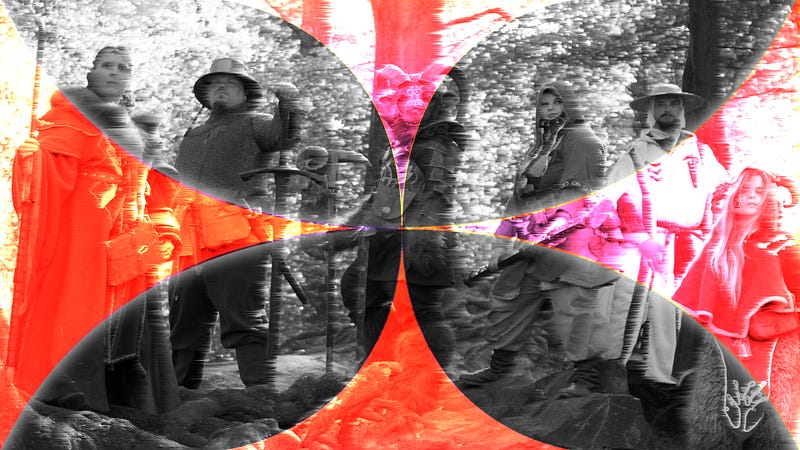 Live Action
Role-Playing or LARPing is the most immersive fiction experience, according to Michel Reilhac.
Within a fictional setting but real environment, participants represented by their avatars have
physical interactions with each other. (PHI)
Live Action
Role-Playing or LARPing is the most immersive fiction experience, according to Michel Reilhac.
Within a fictional setting but real environment, participants represented by their avatars have
physical interactions with each other. (PHI)ACHARD: What is it?
REILHAC: Sex. Sex and LARPing. Live Action Role Play to me is the top of the pyramid of immersive experiences because you actually become someone else in a fiction bubble with others — and it’s all real. I would strongly recommend anyone working in VR to experiment with LARPing because it is the highest level of immersive fiction experiences. It’s not for everyone, but for those who are playfully uninhibited, it’s a great way to reconnect with that child-like imagination adults lose once they grow up. But the thing that makes VR unique and unsurpassable is when the viewer can experience physically impossible situations as if they were really happening. Like flying or being underwater for a long time. We had tricked some bottles and cocktails in our virtual bar during Venice VR Expanded and you were able to trigger the most spectacular fireworks in the sky or make everything slow motion just by touching a bottle of tequila. Some of the things that feel real in VR are totally impossible in real life. Through documentaries in particular, VR can also create that legendary empathy and understanding of a situation. There’s nothing better than VR for that.
ACHARD: We’re coming to the end of our conversation, Michel. To wrap things up, I want to know if you’re hopeful about the future?
REILHAC: Totally. I’m hopeful as long as the XR community does not become trapped in optimism that could blind us. Like I said in the beginning, I think the network needs to be aware of what we are doing and we need to be aware of the future that is shaping. Unlike any other new technology, VR is getting ready to happen big time. The impact it will have on our lives is going to be huge. And like everything, there are going to be amazingly brilliant aspects to it. But we need to be aware of its impact, particularly in the field of identity. I am totally hopeful, though. I feel that those of us working in XR are so privileged to be in this field right now, but we need to have a conscience about it.
ACHARD: Michel, I think that’s the perfect mot de la fin. Thank you for sharing your thoughts and your expertise with us.
REILHAC: Thank you Myriam. You are one of the few bright minds in this community and it’s a privilege to talk with you and be together in this.
Founded and directed by Phoebe Greenberg and based in Montréal, Canada, PHI is a multidisciplinary organization positioned at the intersection of art, film, music, design and technology. Offering a panoramic perspective of radical ideas focused on collective experience, social impact, and audience interactivity, PHI is committed to future generations of art consumption.
PHI consists of the PHI Centre, PHI Studio, artist-in-residence programs and PHI Foundation for Contemporary Art. Through eclectic programming and a strong emphasis on content creation, PHI fosters unexpected encounters between artists and audiences.
Immerse is an initiative of the MIT Open DocLab and receives funding from Just Films | Ford Foundation and the MacArthur Foundation. IFP is our fiscal sponsor. Learn more here. We are committed to exploring and showcasing emerging nonfiction projects that push the boundaries of media and tackle issues of social justice — and rely on friends like you to sustain ourselves and grow. Join us by making a gift today.